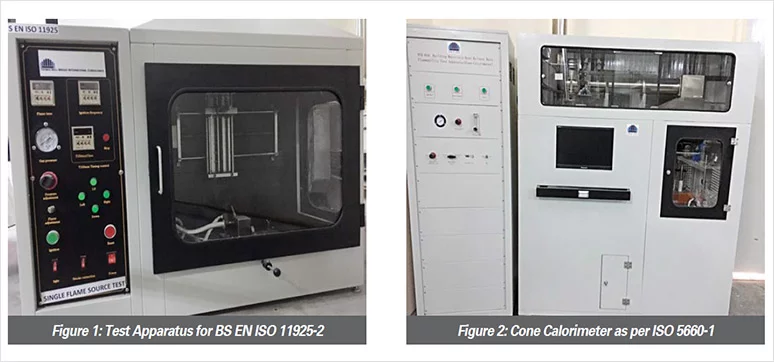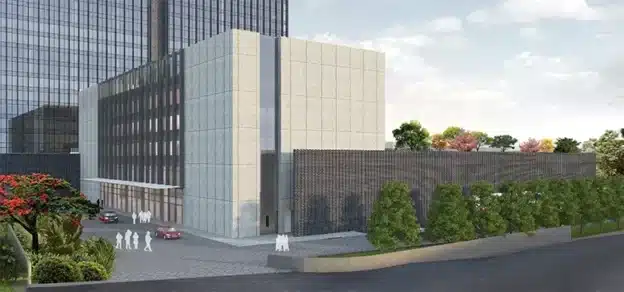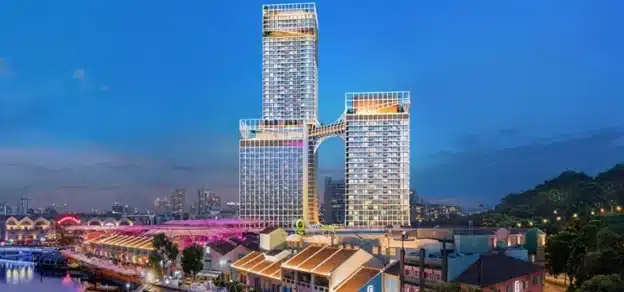As per the data from the Council of Tall Buildings and Urban Habitat, 264 tall buildings (more than 100m) were built between 2006 and 2016 in the Middle East region. North America built 218, Europe built 113, Central America built 65, Oceania region 38 and South America built 32 tall buildings in the same period.
The developers and architects in the Middle East region continue to challenge the engineers to build unique high rise buildings within their limitations of time and money. Adding to this is the unique climate and a passionate drive to be environment-friendly. Navigating this maze that leads to the topping out of buildings is easy if you are armed with the right knowledge and are aware of the tools available that help you distinguish between safe and unsafe.
The shift from the traditional load-bearing wall construction method to the current method of building construction provides an excellent opportunity to clad buildings quickly. This offers a fantastic canvas for architects to showcase their creativity in designing the building envelope. However, providing the much-needed air/water tightness and thermal performance continues to lure the industry towards materials laden with potentially combustible organic compounds.
There are many stakeholders whose active participation results in the cladding of buildings. Starting with architects and design consultants; all the way through contractors, material manufacturers and their representatives; right up to the authorities setting minimum requirements and independent third-party Testing, Certification and Inspection bodies. The codes around the world, including the UAE Fire and Life Safety Code of Practise, use a three-pronged approach to quantify and mitigate the potential fire risks of cladding systems. This article details the three-pronged approach to fire safety and lists some of the common pitfalls that lead to increased fire risk.
Material Compliances
The word “combustible” is possibly the most overused and misunderstood word in the industry. There are several fire-related properties of materials that are critical to understanding the use of various materials in cladding systems. Below defined properties are used to quantify how various materials behave (react) in an environment that can create a fire, or behave (react) after catching fire. The quantification of these properties can be done by many different test methods or approaches. Often methods developed in different parts of the world vary widely in the approach followed. This note will be naming a few commonly used test methods. It is vital to understand that most of these test methods are not equivalent to each other and often quantify the same properties by different approaches.
Ignitability
The ability of a material to be ignited (catch fire) can vary and the environment in which a material can catch fire is one of the tools to quantify the “ignitability” of a material. Test methods such as ASTM D 1929 determine the flash ignition temperature and spontaneous ignition temperature of plastics using a hot-air furnace. The BS EN ISO 11925-2 quantifies the ignitability of building products using direct impingement of flame (a small flame- say the size of a cigarette lighter for 15-30 seconds) to the material (See Figure 1). The EN ISO 1182 uses a cylindrical furnace tube at 750°C measuring temperatures of the specimen continuously for rise and/or visible flames to report ignitability. Ignitability as a standalone property without information about the below properties might not always be useful.
Calorific Value and Heat Release Ratio
These two properties quantify information with similar intent about the material in question. The chemical composition of a material dictates the amount of latent energy the material has. Hence it helps to understand the potential of the material to contribute to the fire by producing higher energy. Unlike the ignitability, which remains the same, irrespective of the volume or quantity of the material, the quantification of this property becomes useful along with the information about the volume or quantity of such material being used at the end application.
The BS EN ISO 1716 uses a bomb calorimeter to determine the gross heat of combustion or calorific value (meaning how much calories or energy the material has and can release when it ignites). Along with other properties of smoke production and mass loss rate, the ISO 5660-1 test method measures the oxygen consumption under controlled irradiance of external ignition to calculate the heat release ratio (See Figure 2). Also meaning the rate at which this material will release the latent energy it contains which can either contribute to the fire or help ignite the adjacent material.
Spread of Flame, Smoke and Other Behaviours
Depending on the composition and distribution of potentially flammable ingredients of a material, the rate at which the flame will spread on its surface and the smoke it can produce will vary. This is often quantified using reference materials. The Steiner Tunnel test (ASTM E84) uses standard Red Oak Wood as a defined rate at which fire would spread across its surface and creates an index using the same (see Figure 3). It also uses a photometer to quantify the smoke which is developed during the 10-minute horizontal flame spread test.

Different test methods use different scales and references to arrive at classifications of the rate at which flame will spread. While Part 6 of the BS 476 measures the flame spread index, the BS EN 13823, popularly known as the single burning item test is more comprehensive and brings out Total Heat Release, Fire Growth Rate, Lateral Flame Spread and even quantifies other properties of smoke and in case any droplets are being produced. The EN 13501-1 uses results from EN ISO 1182, EN 13823, EN ISO 9239-1 and EN ISO 1716 to arrive at detailed classification (See Figure 4).
Project-Specific cladding System Design Compliance
The fire response of the constituent materials of a cladding system is different when they come together as a unique system. The external environment, along with the quantity and distribution of the individual components of a cladding system, influences the behaviour of the complete assembly when they come together in a building. It is a resultant property and is unique to each cladding system design.
The validation of a standard system in a simple cladding installation is easy as its representative mock-up can be built and tested. The NFPA 285 test uses the Intermediate Scale Multi-storey Apparatus to validate the leapfrog effect of the fire breaking out of an opening (See Figures 5 and 6). The same rig is also used to validate the efficacy of the fire and smoke seal of the firestop as per ASTM E2307 (See Figure 7). The BS 8414 is another commonly used large-scale mock-up test.

A specialist fire consultant is one who has the capability to review the following data and information to arrive at the risk assessment of a cladding design.
- Detailed system assembly drawing of a cladding system
- Various reactions to fire properties described above
- Fire propagation response on a mock-up fire test like NFPA 285 or BS 8414 or another.
Empirical knowledge from the material and mock-up tests and the experience of the fire consultant are utilized to assess the risk of the system being installed. Such assessments often result in requests to change material, thickness, spacing and even the gaps; which all affect the final capability of the cladding system to resist the propagation of fire. It is common (and often necessary) to conduct more than one mock-up test to validate the behaviour of an assembly which cannot be replicated in any of the standard mockup fire tests. This helps arrive at the empirical data needed to make decisions on risk assessments.
Independent Inspections
Often the cladding subcontractor starts his work very close to the handover date (he is lucky if the deadline has not passed already when he is awarded the contract). It is obvious that the constraints of time, money, availability of approved materials and possible lack of trained / certified installers can hinder the replication of approved drawings to the fullest. Not having an independent inspector who is empowered to ask the sub-contractor to remove and rework non-compliant installations is a recipe for a fire to happen. As an experienced and accredited inspection agency, Thomas Bell Wright International Consultants has data to prove that having qualified and trained installers leads to quicker work completion and often saves more.

Savings in material costs and money-man-hours justify the higher perceived cost of trained and certified sub-contractors. Accreditations to ISO 17020 or Accreditation Criteria for Special Inspection Agencies (AC291) by International Accreditation Service (IAS), which is a subsidiary of the International Code Council, offer the tools to validate independent inspection agencies.

Pitfalls
Months of preparation and millions spent by stakeholders to achieve compliance go futile in certain projects that miss out on these potential pitfalls:
- Relying on non-related test reports and declarations for promised future compliances to make decisions to select and buy materials can be a fatal mistake. Failing to cross-check and correlate the certification and listing of materials being purchased with the material being delivered on-site is equal to taking home someone else’s (smaller) shopping trolley. Each certificate submitted has a tracing number which leads to the website of the certification body that provides details on the manufacturing details of the product, particulars of the certification mark and other markings that can be validated on the packaging of material received on site. Look up www.tbwcert.com to learn more.
- Improper drawing reviews: Each non-validated change in the approved drawing can be a potential fire safety risk. When the drawings change hands from the architect to the design consultant to the contractor and the sub-contractor, there are several changes that are proposed and often agreed upon as well. A specialist fire consultant or a competent body has the capability to review empirical data from test results in conjunction with their past experiences. The body will analyse the liability of the fire risk when approving the drawings. Any changes to these drawings take away “ALL” the liability and pass it on to the one who agrees to the changes.
- Site supervision by accredited and authorized third-party inspectors: How can the agency, whose payment is linked with the time-line of the installation, ask to bring down the installation and redo it again in case non-compliance is noticed? Both the qualifications and commercial delinking are critical to the inspection agency’s role. Lastly, this is the most important and often neglected step. Being one of the last phases of the project, the cladding of a building often faces crunches of time and money. Ignoring proper supervision is a sure-shot recipe for another fire to happen.















